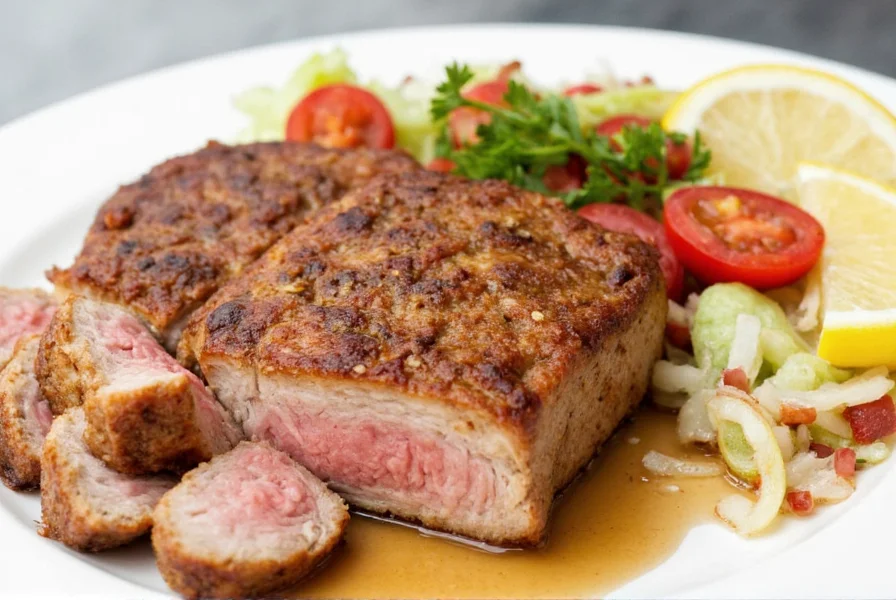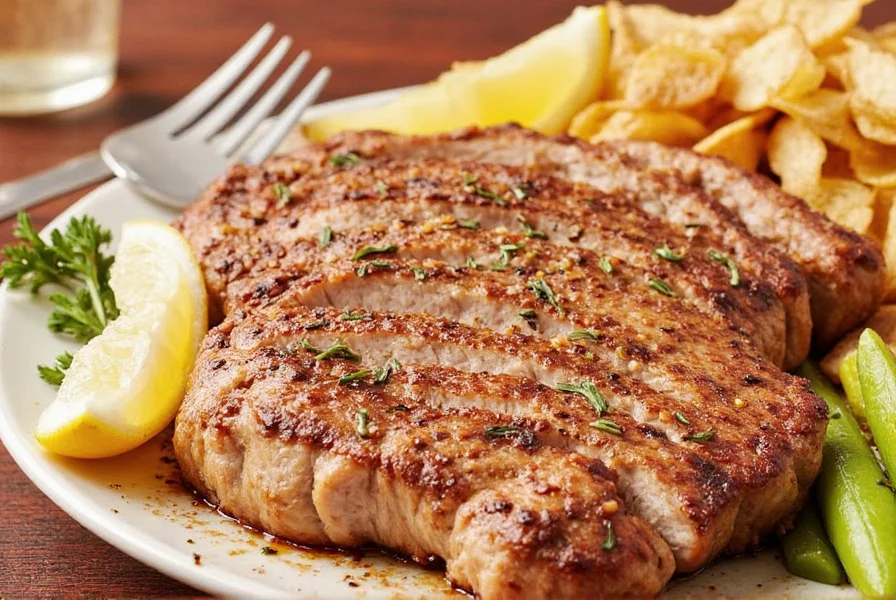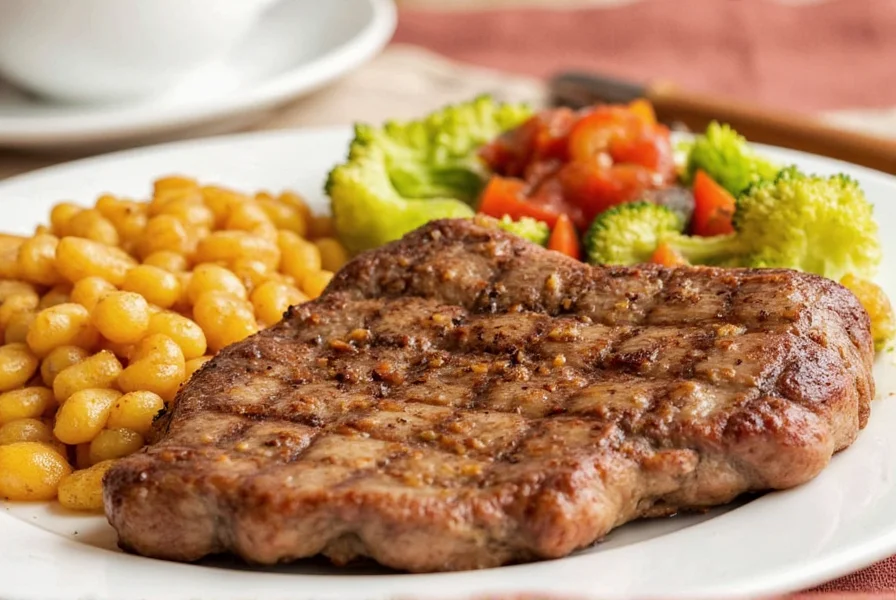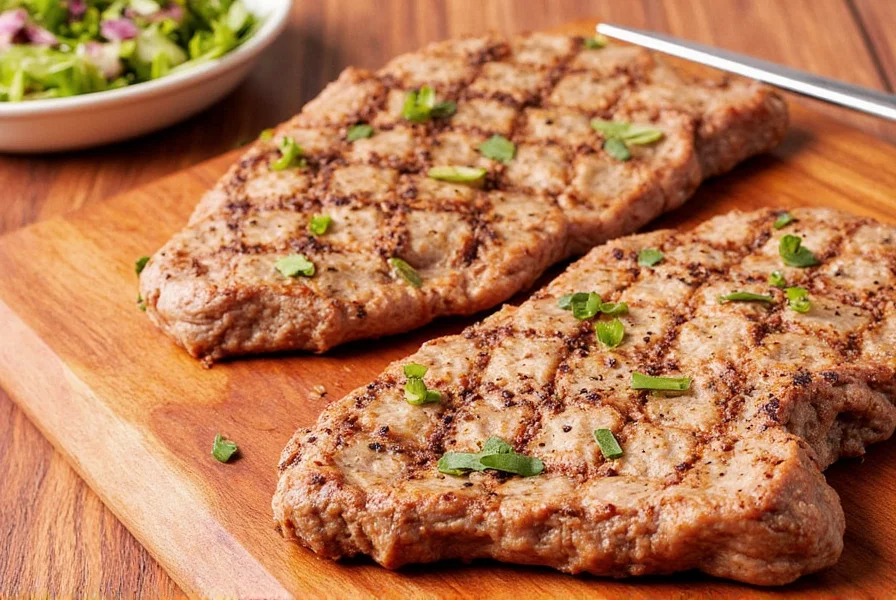
How to make seasoned pork steak taste like a restaurant-quality dish? The secret is in the spices! This guide reveals exactly how to season pork steak for maximum flavor, from spice selection to cooking techniques. Learn why proper seasoning matters and how to avoid common mistakes that ruin pork steak.
Why Your Seasoned Pork Steak Isn't Tasting Like Restaurant-Quality
Most home cooks fail to achieve restaurant-quality pork steak because they're missing these key elements:
- Not understanding how salt penetrates meat properly
- Using the wrong spices for pork's natural flavor profile
- Skipping the crucial resting period after cooking
- Over-seasoning or under-seasoning due to incorrect measurements
Let's fix that. Below you'll find exactly what to do for perfect pork steak every time.

What Makes Pork Steak Special for Seasoning?
Pork steak has a unique flavor profile that requires specific seasoning approaches. Unlike beef, pork benefits from:
- Balance of sweet and savory spices
- Lighter seasoning than beef (pork is more delicate)
- Spices that complement rather than overpower the natural meat flavor
Most people make the mistake of using beef seasoning techniques on pork, which often results in overly spicy or salty results.
| Spice | Flavor Profile | Best Use With Pork |
|---|---|---|
| Salt | Briny, enhancing | All-purpose, must-have base |
| Black Pepper | Earthy, mildly hot | Classic pair with grilled pork |
| Smoked Paprika | Smoky, sweet | Great for BBQ or slow-roasted dishes |
| Cumin | Nutty, warm | Mexican, Indian, Middle Eastern fusion |
| Cayenne | Hot, sharp | Add heat to marinades or dry rubs |
10 Critical Mistakes When Seasoning Pork Steak (And How to Fix Them)
Mistake #1: Not Salting Early Enough
Applying salt right before cooking prevents proper penetration. Fix: Apply salt at least 45 minutes before cooking to allow it to penetrate the meat and enhance flavor throughout.
Mistake #2: Using the Wrong Spice Ratios
Most home cooks use too much of strong spices like cumin or cayenne. Fix: For 1 pound of pork steak, use no more than 1 tsp of strong spices (cumin, cayenne) and 1-2 tsp of milder spices (paprika, garlic powder).
Mistake #3: Skipping the Resting Period
Resting allows juices to redistribute. Fix: Always let pork steak rest for 5-10 minutes after cooking before slicing.
Mistake #4: Using Pre-Made Rubs Without Adjusting
Commercial rubs often contain too much salt and sugar for pork. Fix: Make your own rub using the exact ratios shown in this guide.
Mistake #5: Not Matching Spices to Pork Cut
Thicker cuts can handle bolder spices, while thinner cuts need lighter seasoning. Fix: Use the following guide for your specific cut:
- Ribeye Pork Steak: Bold spices like smoked paprika, cumin, and black pepper
- Sirloin Pork Steak: Lighter seasoning with garlic powder, onion powder, and paprika
- Shoulder Pork Steak: Heavier seasoning with cayenne and extra salt
Proven Seasoning Method for Perfect Pork Steak
Follow this exact method for restaurant-quality results:
- Pat pork steak dry with paper towels
- Apply 3/4 tsp kosher salt per pound of meat, 45 minutes before cooking
- Prepare dry rub: 1 tbsp smoked paprika, 1 tsp garlic powder, 1 tsp onion powder, 1/2 tsp black pepper, 1/2 tsp cumin
- Apply dry rub evenly to both sides of pork steak
- Heat skillet to medium-high, add oil
- Cook for 4-5 minutes per side for medium-rare
- Rest for 5-10 minutes before serving

Buying Guide: What to Look for in Spices
Not all spices are created equal. Here's what to check when buying spices for pork steak:
| Brand | Key Features | Best For | Price Range |
|---|---|---|---|
| McCormick | Widely available, consistent flavor | Everyday use, basic rubs | $ – $$ |
| Penzey's Spices | Fresh, bulk options, gourmet quality | Advanced cooks and spice lovers | $$ – $$$ |
| Spice Islands | Natural packaging, classic blends | Family meals, casual cooking | $$ |
| The Spice Garden | Organic and specialty blends | Health-conscious cooks | $$ – $$$ |
Frequently Asked Questions About Seasoned Pork Steak
What's the most common mistake when seasoning pork steak?
Applying salt right before cooking. Salt needs time to penetrate the meat. Apply salt at least 45 minutes before cooking for best results.
How much salt should I use for pork steak?
Use 3/4 teaspoon of kosher salt per pound of meat. This is the perfect amount to enhance flavor without making it too salty.
Can I use fresh garlic instead of garlic powder?
Yes, but with caution. Fresh garlic can burn during cooking. For dry rubs, use garlic powder. If using fresh garlic, mince very finely and add during the last minute of cooking.
What's the difference between smoked paprika and regular paprika for pork steak?
Smoked paprika adds a distinctive smoky flavor that complements pork beautifully, while regular paprika provides mild sweetness without the smoke. Use smoked paprika for grilled or BBQ-style pork steak, and regular paprika for lighter dishes.
Should I marinate pork steak before cooking?
For best results, dry rubs work better than marinades for pork steak. Marinades can make the surface too wet for proper searing. If using a marinade, limit it to 2 hours maximum for thinner cuts.
How do I know when my pork steak is cooked properly?
Use a meat thermometer. Pork steak is safely cooked at 145°F (63°C) with a 3-minute rest time. For visual cues, the meat should feel firm but still have some give when pressed, and clear juices should run when pierced.

Conclusion: How to Make Restaurant-Quality Seasoned Pork Steak at Home
Restaurant-quality seasoned pork steak is achievable at home with the right techniques. The key is understanding how pork reacts to seasoning, using the right spices in the right amounts, and following proper cooking methods.
Remember: Don't skip the resting period, use the right salt-to-meat ratio, and match your spices to your pork cut. With these simple steps, you'll consistently make pork steak that tastes like it came from a fine dining restaurant.












 浙公网安备
33010002000092号
浙公网安备
33010002000092号 浙B2-20120091-4
浙B2-20120091-4